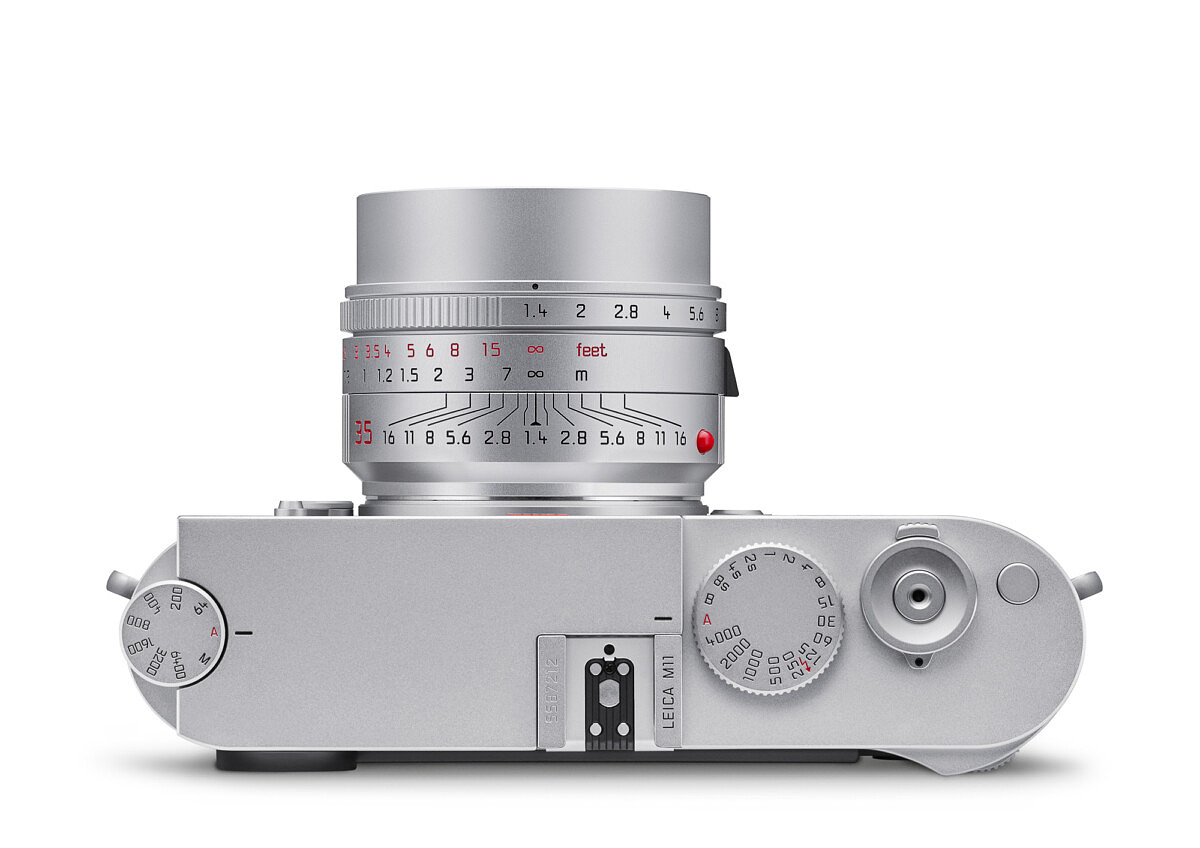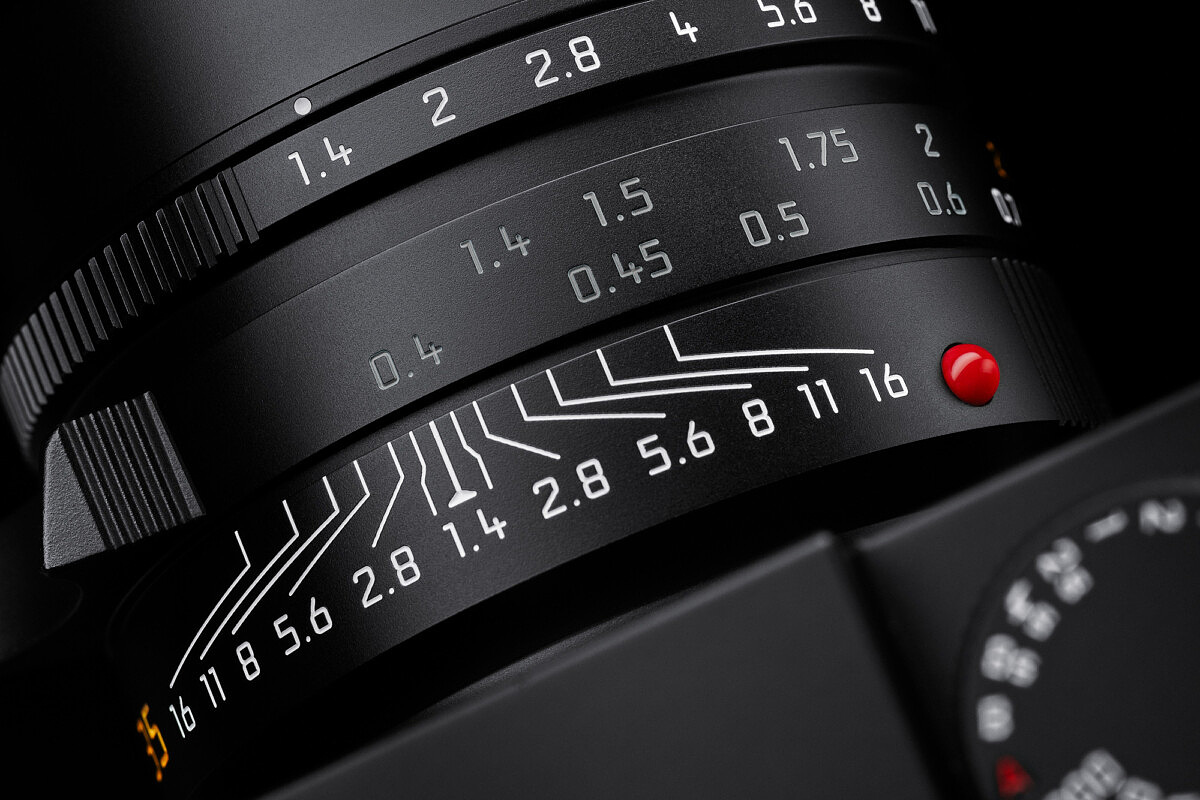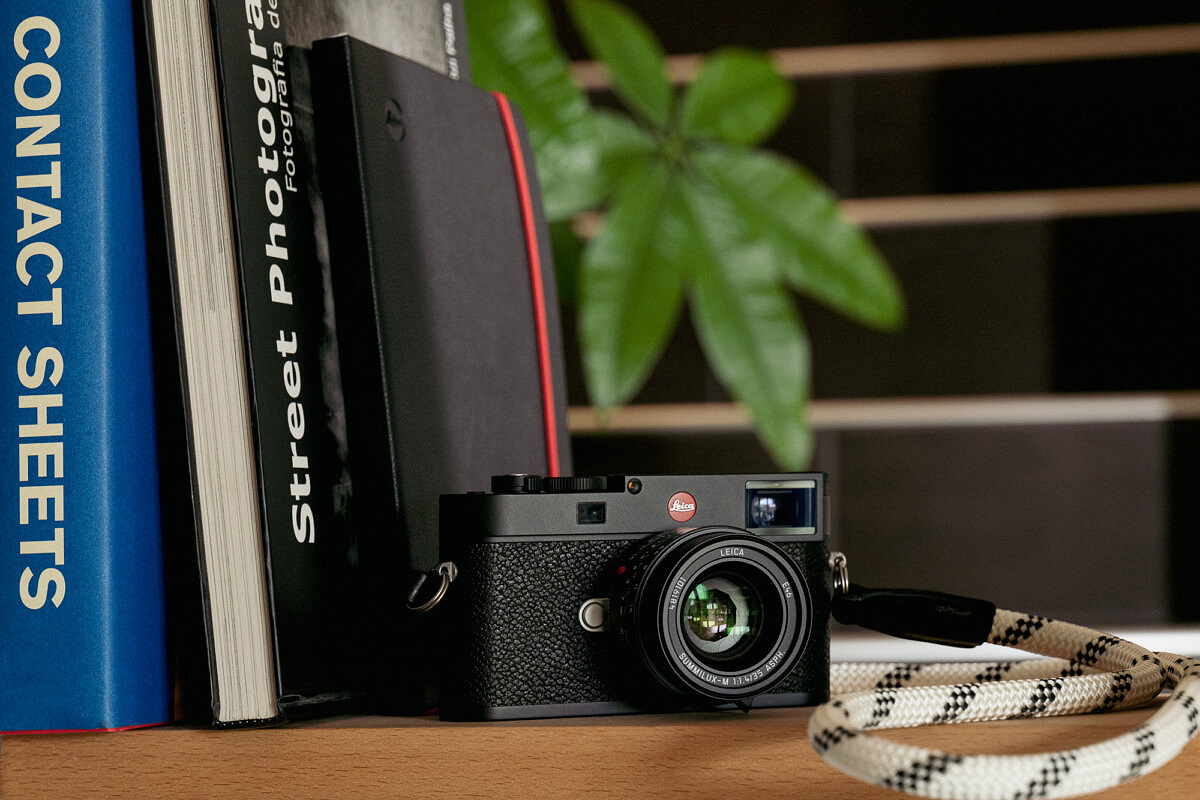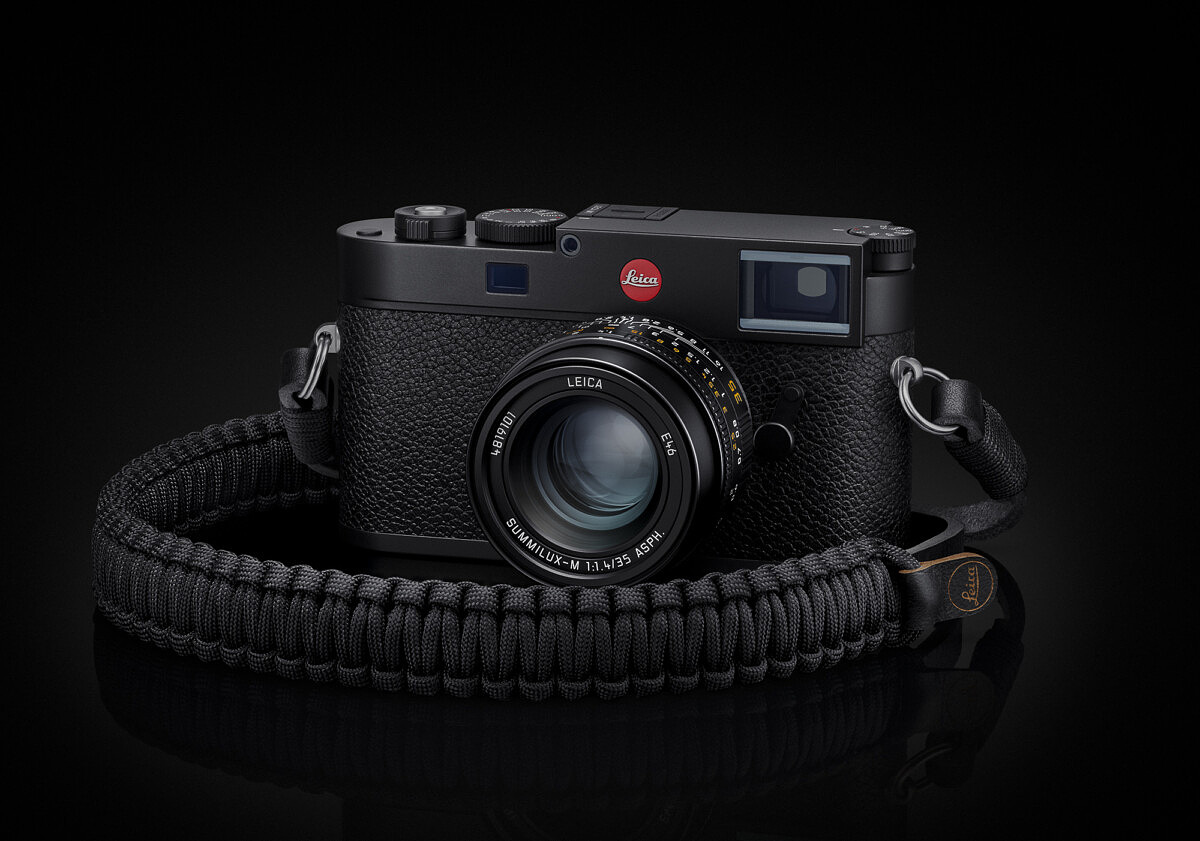Today, Leica has announced a new version of the venerable 35mm Summilux-M f/1.4 ASPH FLE. Featuring the same excellent optical formula as the current 35mm FLE, the new lens offers a few notable updates. Perhaps most significant, like the APO-Summicron-M 35mm f/2 ASPH, the revised 35mm Summilux-M features close-focusing down to 0.4 meters thanks to a newly developed patent-pending double cam unit. Also new are an eleven-blade aperture for improved bokeh when stopped down and a built-in retractable circular lens shade.

Filter size remains unchanged at 46mm, but the physical size of the lens has grown a bit, with a 2mm wider girth and around 18g heavier. But the shorter length with the hood retracted should ultimately make the new 35mm Summilux-M a little more compact overall. From launch, the lens will be offered in black and silver anodized finishes, both constructed from aluminum.


Close Focus Range
While almost all M lenses are constrained to a minimum focus distance of 0.7m, the physical limit of the optical rangefinder in an M camera, the new 35mm Summilux can decouple and focus all the way down to 0.4m. Separated from the standard infinity to 0.7m rangefinder-coupled range by a light detent and distinguished by subtle gray distance engravings, close-focusing requires the use of live view, rather than the optical rangefinder.

Any live view-capable M camera (M240, M10, M11, etc.) or SL mirrorless body (SL601, SL2, SL2-S) will allow full focusing functionality. Of course, even without the benefit of close focus, users of non-live view cameras like the M9 or M7 can still use the 35 Summilux as a standard M lens.
Eleven Aperture Blades
With two more aperture blades compared to the current 35mm Summilux-M ASPH FLE, the new lens will produce slightly smoother bokeh. Naturally, this update won't impact bokeh when shooting wide-open at f/1.4 since the blades are fully retracted. Rather, the effect will be most visible when stopping down slightly in the f/2 to f/5.6 range. And while the bokeh on the outgoing FLE lens is already so pleasing, we're happy to take any improvement we can get.

New Built-In Lens Shade
Over the last decade or two, lens shades have been a continual evolution at Leica. The first version of the 35mm Summilux ASPH used a quirky push-and-twist locking system with a plastic shade. The follow-up FLE revamp introduced a flared screw-on rectangular metal hood. And now, with the second version of the FLE, Leica has built the lens shade into the design with a similar implementation and look on the 50mm APO-Summicron-M. To extend, simply twist. The hood will stop rotating and gently lock in place. Retracting is the same in reverse. Turn the opposite direction until fully seated back in the barrel.

Compared to Current Version
| FLE II | FLE I | |
| Closest Focus | 0.4 meters | 0.7 meters |
| Aperture Blades | 11 | 9 |
| Weight | 338 g | 320 g |
| Lens Hood | Integrated | Thread-on |
| Length | 46mm | 46mm (58mm with hood) |
| Diameter | 58mm | 56mm |
| Reproduction Ratio | 1:8.9 | 1:17.4 |
Pricing, Ordering and Availability
Initial deliveries of the Leica Summilux-M 35mm f/1.4 ASPH FLE II will start within the next week for a price of $5,395 for black and $5,595 for silver anodized. As with any major Leica launch, and especially true for a high-performing lens like this, supply will be extremely limited for many months. If you are interested in ordering the 35mm Summilux-M ASPH FLE II, you can do so at Leica Store Miami by clicking the button below, calling 305-921-4433 or sending an email to info@leicastoremiami.com. If you are interested in trading in any other Leica equipment towards the purchase of the lens, you can note it during the pre-order process.

Tech Specs
| Order Number | 11726 (black anodized), 11727 (silver anodized) |
| View angle (diagonal/horizontal/vertical) Full-frame (24 x 36 mm) | 62.5°, 53.6°, 37.2° |
| Number of lenses/assemblies | 9/5 |
| Number of aspherical surfaces | 1 |
| Position of the entrance pupil before the bayonet | 16mm |
| Focus range | 0.4m to infinity |
| Focus Scale | Combined scale meter (m)/foot (ft) |
| Smallest object field | Full-frame: 213 x 319 mm |
| Reproduction Ratio | 1:8.9 |
| Aperture Setting/Function | Lock blade, with half-increment lock settings |
| Smallest aperture | 16 |
| Number of aperture blades | 11 |
| Bayonet | Leica M bayonet with 6-bit encoding |
| Filter thread | E46 (46mm) |
| Lens hood | Pull-out (circular) |
| Length | Approx. 46 mm |
| Diameter | Approx. 58 mm |
| Weight | Approx. 338 g |
| Scope of Delivery | Lens, rear lens cap, front lens cap, lens case |
Press Release
The history of Leica's optical design dates back more than 150 years and speaks to innovative engineering, uncompromising precision and outstanding quality. This applies especially to Leica M lenses. One of the most versatile among them has now been redesigned to provide even more flexibility for creators:

The Leica Summilux-M 35 f/1.4 ASPH.
Whether for detailed landscape shots, high-contrast pictures in difficult lighting conditions or subjects in close-up range with shallow depth of field: the Summilux-M 35 f/1.4 ASPH. produces extraordinary results. Now, eleven instead of nine aperture blades are used for a visibly improved bokeh. In addition, the closest focusing distance was reduced from 70 to 40 centimeters. When shooting up to 70 centimeters, this works as usual via the rangefinder on all Leica M cameras. After a slight perceptible resistance, the extended close-focus range between 70 and 40 centimeters can be controlled via Live View on the screen, the Visoflex viewfinder or the Leica FOTOS app. Lastly, the lens hood is now round, directly integrated in the lens and can be easily available at any time.
These new lenses will replace the current Leica Summilux-M 35 f/1.4 ASPH lenses while supplies last (11663 and 11675). The optical formula and filter size (E46) remains unchanged with this new version.

That Summilux bokeh must be outrageously creamy and center sharp at 0.4m (Hopefully not nervous)
This price being so much lower than the FLE I makes me wonder if maybe these are made in Portugal. Is there any chance that’s true? Can anyone confirm one way or the other?
Hi Kate. I asked this on Leica Australia’s Instagram page and they confirmed it’s made in Germany.
Curious to why Lightroom is almost always mentioned but never programs that are in many ways superior, such as Capture One?
Capture One is a great choice and offers official support for Leica DNGs. But we do continue to prefer Lightroom for file management and image processing. Lightroom works so well with Leica files due to Leica and Adobe’s close collaboration since 2009. Adobe is a juggernaut in the imaging world. They continue to introduce new and powerful features, constantly improving image quality, processing speed and pushing what can be accomplished in a single end-to-end RAW workflow.
Choices are great. At the end of the day, use what works best for your photography and workflow. If that’s C1, awesome.